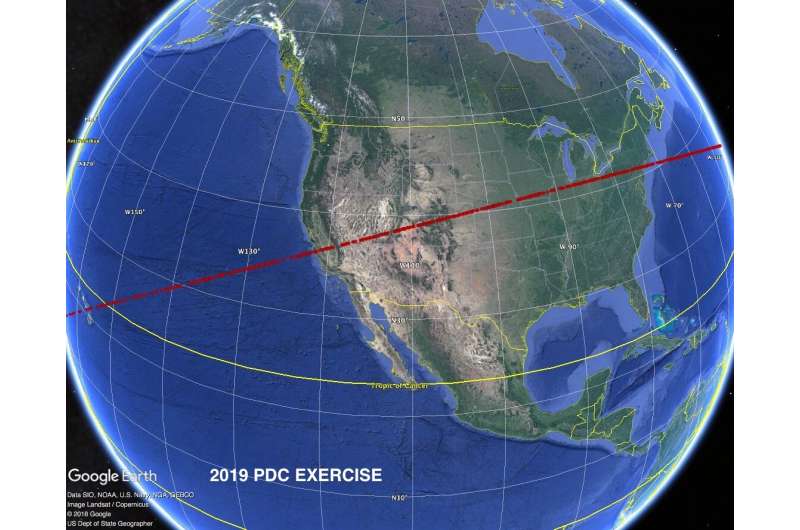The day the asteroid might hit

For the first time, ESA will cover a major international asteroid impact exercise live via social media, highlighting the the actions that might be taken by scientists, space agencies and civil protection organisations.
Every two years, asteroid experts from across the globe come together to simulate a fictional but plausible imminent asteroid impact on Earth. During the week-long scenario, participants – playing roles such as 'national government', 'space agency', 'astronomer' and 'civil protection office' – don't know how the situation will evolve from one day to the next, and must make plans based on the daily updates they are given.
For the first time, ESA will cover progress of the hypothetical impact scenario from 29 April to 3 May live via social media, primarily via the @esaoperations Twitter channel.
Planetary Defence Conference
The exercise is being produced by experts from NASA's Planetary Defense Coordination Office working together with the US Federal Emergency Management Agency at the 2019 Planetary Defense Conference, Washington DC. The conference is the world's most important gathering of asteroid experts, and is strongly supported by ESA, NASA and other agencies, organisations and scientific institutions.
"The first step in protecting our planet is knowing what's out there," says Rüdiger Jehn, ESA's Head of Planetary Defence.
"Only then, with enough warning, can we take the steps needed to prevent an asteroid strike altogether, or to minimise the damage it does on the ground."
20 000 asteroid milestone
As of April 2019, 20 000 asteroids whose orbit brings them near Earth have been found. At the current rate of roughly 150 new discoveries every month, this number is set to rapidly increase.
With the planned deployments of ESA's new Flyeye and Test-Bed Telescopes, Europe's ability to discover, confirm and understand the ancient rocks that hurtle through space will grow – fundamental to implementing mitigation measures.
Follow asteroid impact exercise live
The @esaoperations Twitter channel will share updates on the asteroid impact exercise in realtime, including daily press releases revealing how the asteroid impact scenario will evolve, so followers will find out the 'news' as the experts do.
What will they do? What would you do?
On ESA Facebook, join ESA for two live-stream videos straight from the Planetary Defense Conference. The first will be on Sunday, 28 April, at 14:00 CEST (08:00 EDT) with Rüdiger Jehn, ESA's Head of Planetary Defence, and the second on Thursday, 2 May, at around mid-afternoon European time.
Provided by European Space Agency





















